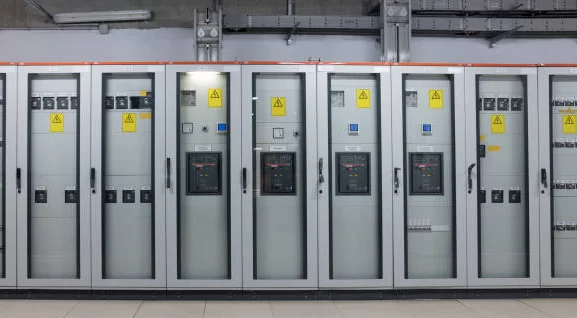Liquid-cooled Energy Storage System: Revolutionizing Energy Storage for a Sustainable Future
In the quest for efficient and reliable energy storage solutions, the Liquid-cooled Energy Storage System has emerged as a cutting-edge technology with the potential to transform the energy landscape. This blog delves deep into the world of liquid cooling energy storage systems, exploring their workings, benefits, applications, and the challenges they face.
I. Introduction
Energy storage has become an indispensable component of modern energy systems, enabling the integration of renewable energy sources, improving grid stability, and providing backup power during outages. Traditional energy storage methods often struggle to meet the increasing demands of high-power, high-density applications, leading to the development of advanced cooling techniques like liquid cooling.
II. How Does a Liquid-cooled Energy Storage System Work?
At the heart of a liquid cooling energy storage system is a carefully designed cooling loop. The coolant, typically a specialized fluid with high heat transfer capabilities, is circulated through channels or plates in close proximity to the battery cells or modules.
As the batteries undergo charging and discharging, heat is generated. The liquid coolant absorbs this heat and carries it away to a heat exchanger, where it is dissipated to the surrounding environment. The rate of coolant flow and the temperature of the coolant are precisely controlled by a sophisticated control system to maintain the batteries within an optimal temperature range.
This continuous and efficient heat removal process ensures that the batteries operate at peak performance, extending their lifespan and reducing the risk of thermal runaway or other safety issues.
III. Benefits of Liquid cooling Energy Storage Systems
- Enhanced Performance
The precise temperature control provided by liquid cooling allows for higher charging and discharging rates, enabling the energy storage system to deliver more power when needed. This is particularly crucial in applications such as electric vehicle fast charging stations and grid-scale energy storage, where rapid power delivery is essential.
- Extended Battery Life
Excessive heat is one of the main factors that degrade battery performance over time. By maintaining a consistent and moderate temperature, liquid cooling significantly reduces the rate of battery degradation. This means longer battery life, fewer replacements, and lower overall lifecycle costs.
Improved Safety
Thermal runaway is a significant concern in battery systems. Liquid cooling helps to keep the temperature within safe limits, minimizing the risk of overheating and reducing the likelihood of fire or other safety hazards.
Compact Design
The efficient heat dissipation of liquid cooling allows for higher battery density packaging, enabling more energy to be stored in a smaller space. This is especially valuable in applications where space is at a premium, such as in electric vehicles.
IV. Applications of Liquid-cooled Energy Storage Systems
- Renewable Energy Integration
Liquid cooling energy storage systems play a crucial role in smoothing out the intermittent nature of renewable energy sources like solar and wind. They can store excess energy generated during peak production periods and release it when the supply is low, ensuring a stable and reliable power grid.
Electric Vehicles
The high power and energy density requirements of electric vehicles make liquid-cooled battery packs an ideal choice. They enable faster charging times, longer driving ranges, and improved overall vehicle performance.
Data Centers
Data centers consume vast amounts of energy, and reliable power backup is essential. Liquid cooling energy storage systems can provide instantaneous power during outages and help manage power fluctuations, ensuring uninterrupted operation.
Industrial and Commercial Facilities
In factories, hospitals, and commercial buildings, liquid-cooled energy storage systems can be used for peak shaving, reducing energy costs by storing energy during off-peak hours and using it during peak demand periods.
V. Challenges and Mitigation Strategies
- Complexity and Cost
The design and implementation of liquid-cooled systems are more complex than traditional cooling methods, which can increase initial costs. However, economies of scale and technological advancements are expected to drive down costs over time.
Maintenance and Reliability
The coolant loop and associated components require regular maintenance and monitoring to ensure reliable operation. Advanced predictive maintenance techniques and real-time monitoring systems can help address these challenges.
Environmental Impact
The selection of environmentally friendly coolants and proper disposal methods are important considerations to minimize the environmental footprint of liquid cooling energy storage systems.
VI. Future Outlook
The future of liquid cooling energy storage systems looks promising. Ongoing research and development efforts are focused on improving the performance, reducing costs, and enhancing the sustainability of these systems.
Advancements in materials science, battery chemistry, and cooling technology are expected to lead to even more efficient and compact designs. Additionally, as the demand for renewable energy and energy storage continues to grow, liquid-cooled systems are likely to become the standard in many applications, driving the transition towards a cleaner and more resilient energy future.
In conclusion, the Liquid cooling Energy Storage System represents a significant leap forward in the field of energy storage. With its numerous benefits and wide range of applications, it holds the key to unlocking a more sustainable and reliable energy ecosystem. As we continue to embrace this technology and overcome the associated challenges, we are one step closer to a world powered by clean and efficient energy.

